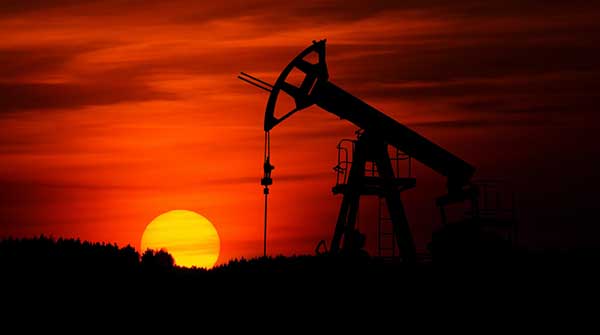Global oil demand to peak within five years, says International Energy Agency (IEA)
 Oil experienced its largest weekly drop since early May last week, punctured by interest rate hikes in several major oil-consuming countries. Brent fell around US$3 per barrel on Thursday after the Bank of England increased rates by half a percentage point – more than anticipated. Central banks in Norway and Switzerland also increased their rates.
Oil experienced its largest weekly drop since early May last week, punctured by interest rate hikes in several major oil-consuming countries. Brent fell around US$3 per barrel on Thursday after the Bank of England increased rates by half a percentage point – more than anticipated. Central banks in Norway and Switzerland also increased their rates.
Dennis Kissler, BOK Financial’s senior vice president of trading, said, according to Reuters, that rising interest rates in the EU and disappointing stimulus figures from China are causing a retreat from crude oil investments. “There seems to be a growing ‘risk back off’ type of trade now in crude, triggered by the interest rate rises in the EU and disappointing stimulus numbers out of China,” he said.
Despite Saudi Arabia’s decision to cut its oil output by an additional one million barrels per day, oil prices continue to fall. This confirms Saudi Arabia’s fears that crude oil demand is weak and market prices are under pressure.
According to a report from the International Energy Agency (IEA), global oil demand will peak in the coming years before starting to decline. The report released on June 14 predicts that the surge in oil demand following the easing of COVID-19 restrictions will likely end this year.
The Paris-based IEA expects global oil demand to rise to 105.7 million barrels per day by 2028, a six percent increase from 2022. However, it also predicts that demand for oil in the transportation sector will begin to decline in 2026 due to economic factors, the Russia-Ukraine war, the switch to electric vehicles, and increased efficiency measures.
The report also indicates that demand for gasoline will start to fall at the end of the year, and the increase in demand for combustible fossil fuels will peak in 2028. By that time, demand for oil will drop to 400,000 barrels per day, compared to 2.4 million barrels per day in 2023.
The transportation sector currently accounts for 60 percent of oil consumption, and any decrease in demand in this sector will significantly impact overall oil consumption.
Crude oil prices also inched lower after the U.S. Energy Information Administration reported a 7.9 million barrel inventory increase for the week of June 9.
In response to these developments, Wall Street analysts have abandoned their optimism for a rally this year, according to Grant Smith of Bloomberg. JPMorgan Chase & Co. became the latest major bank to lower its oil price forecasts, cutting its Brent price targets for the second half of 2023 by 11 percent to US$82 a barrel.
Investment bank Morgan Stanley, which had previously predicted a potential bull run in the second half of 2023, has now backtracked, saying it no longer expects this scenario to occur.
Goldman Sachs Group Inc. and Bank of America Corp. also recently downgraded their oil price forecasts due to surprisingly resilient supplies from Russia and Iran and tighter U.S. monetary policy, respectively.
The Saudi market assessment, therefore, seems accurate, as crude markets are facing significant challenges.
Toronto-based Rashid Husain Syed is a respected energy and political analyst. The Middle East is his area of focus. As well as writing for major local and global newspapers, Rashid is also a regular speaker at major international conferences. He has provided his perspective on global energy issues to the Department of Energy in Washington and the International Energy Agency in Paris.
For interview requests, click here.
The opinions expressed by our columnists and contributors are theirs alone and do not inherently or expressly reflect the views of our publication.
© Troy Media
Troy Media is an editorial content provider to media outlets and its own hosted community news outlets across Canada.


